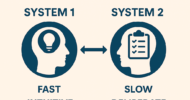Though there have been notable exceptions, digital health has often proved a slow sell to the medical establishment. The failures of Google Health and HealthVault to gain traction, for example, underscore the challenges of breaking into the workflow of doctors.
Yet over the past month, three technology giants have, in the form of a series of launches, given an endorsement that digital health will be one of the next important technological trends. From Google has come an API infrastructure called Google Fit. From Samsung, the the data platform SAMI, and from Apple the developer tool Healthkit.
What’s changed to prompt these companies to jump into the digital health all at once? I would argue that the wearables revolution that is currently underway demonstrates that the technology industry has realized that consumers, not the medical establishment, will drive adoption — and that this is fast-tracking the pace of change.
That doesn’t demote the role of the health care establishment in the question of whether this trend proves lasting. Even purpose-build musculoskeletal registries have had difficulty winning the trust of physicians, and it remains to be seen whether the data collected by the current community of health apps and tracking devices is of sufficient quality to create individual-level, real-time health and wellness predictions. To determine this, large-scale validations of insights will be necessary.
It is becoming apparent to all in the industry that data is perhaps the most precious commodity available to digital health and wearable tech firms, and data becomes more valuable when it encompasses multiple perspectives on the same individual. With the explosion of the Internet of Things, users now record their daily activities in several ways, but often in separate locations. Until now there wasn’t any value in sharing these reams of data — not much could be done with them. But with an increased focus on analysis and the provision of insights, this is changing.
Concurrently, with bigger companies offering analytical tools and platforms, a “plumbing system” for the data is becoming a reality. This will provide more exposure to smaller, true data democracy driven startups that are attempting to create a culture of reciprocal data sharing necessary to increase the complexities of analysis done on wearables data. Indeed, my prediction is that a large number of secondary analysis companies will emerge from the entry of the tech giants and add value to existing devices that have thus far demonstrated poor long-term engagement numbers.
Overall, the latest announcements give me hope that the emergence of wearable tech will become a positive influence on population health and solve some tough problems faced by the medical establishment. The entire world is being faced by a crisis of chronic, non-communicable diseases. Wearables provide one behaviorally-focused tool that may slow or reverse the disease trends and crack the code of wellness for a large segment of society.
Jesse Slade Shantz is an orthopedic surgeon who blogs at The Doctor Blog.





















![Rethinking medical education for a technology-driven era in health care [PODCAST]](https://kevinmd.com/wp-content/uploads/The-Podcast-by-KevinMD-WideScreen-3000-px-4-190x100.jpg)
